We could debate forever about grilled versus griddled burgers. And, while we’re at it, about charcoal versus gas grills. But let’s say you don’t have a grill. Or mabe it’s below-freezing outside. How do you make a great burger without leaving your kitchen?
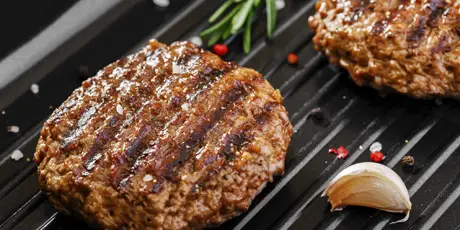 First, I need to explain the difference between English-English and American-English. In American-English, grilling is a form of cooking that involves dry heat applied to the surface of food, commonly from above or below. Grilling usually involves a significant amount of direct, radiant heat, and tends to be used for cooking meat and vegetables quickly. Food to be grilled is cooked on a grill, a grill pan, or griddle. Broiling is like grilling, only turned on its head. Broiling is when the heat is applied from above the food. In English-English, grilling is like American broiling. It’s also used for barbeques etcetera when the food rests on a metal grill. The other stuff is ‘pan fried’ or simply ‘fried’. So far; so complicated. So I shall try and explain as I go.
First, I need to explain the difference between English-English and American-English. In American-English, grilling is a form of cooking that involves dry heat applied to the surface of food, commonly from above or below. Grilling usually involves a significant amount of direct, radiant heat, and tends to be used for cooking meat and vegetables quickly. Food to be grilled is cooked on a grill, a grill pan, or griddle. Broiling is like grilling, only turned on its head. Broiling is when the heat is applied from above the food. In English-English, grilling is like American broiling. It’s also used for barbeques etcetera when the food rests on a metal grill. The other stuff is ‘pan fried’ or simply ‘fried’. So far; so complicated. So I shall try and explain as I go.
It seems to me that there are three basic cooking methods you can adopt to cook a burger indoors. The first is to broil your burger under the oven grill (that’s grilling in English-English). The second is to ‘grill’ it in a ridged grill pan (that’s pan-fried in English-English). And the third is on the stove top in a flat-bottomed skillet or frying pan (that’s also pan-fried in English-English).
The good news is that all three methods produce tasty burgers. But there are some tips and tricks that apply to every method. In other words, whether you want to griddle or broil is your call. Just don’t forget to follow these rules for success.
1. Don’t skimp on the fat.
Ground beef (minced beef) is classified according to its fat content. This is important in all ground beef recipes, from meatloaf to meatballs, but especially so when it comes to burgers. My own preference is for a burger with 20 percent fat and 80% meat. That may sound like a lot of fat, but if you’re making burgers, make them right! This fat content yields a juicy, full-flavoured result. Leaner options flirt with blandness and dryness. And a higher fat content risks a greasy burger.
2. Season immediately before cooking.
After you form the burger patty and you are ready to cook it, season the heck out of it with kosher salt (or rock salt) and freshly ground black pepper. But don’t season it before you’re ready to cook. Mixing the ground beef with salt (like you would with meatloaf or meatballs) affects the texture of the meat, making it tougher. By seasoning the outside just before you cook, you get a fabulous, full-flavour, super-tender beef patty.
3. Get the pan (or broiler) crazy hot.
What’s so great about grilling burgers? The smoky char you get from a blazing-hot grill. So by fully heating your pan or broiler, you’re treating your burger to the intense heat it deserves. That’s what creates the crustiest crust, which is as much about textural contrast as it is about big-time flavour. For bonus points, you can heat your pan under the broiler before adding the burger to the pan. That allows you to have a rare burger with a deep rich crust.
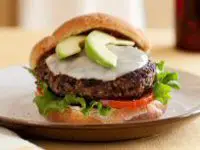 For a burger with a difference, why not try Italian Style Burger? The addition of a little Pecorino Romano to the burger mix and then the melted Provolone cheese on top really does make it feel like Tuscany on a sunny day.
For a burger with a difference, why not try Italian Style Burger? The addition of a little Pecorino Romano to the burger mix and then the melted Provolone cheese on top really does make it feel like Tuscany on a sunny day.
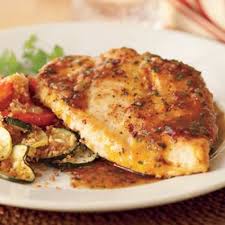 Many people avoid chicken breasts because they find them dry, tasteless and boring. Others choose the breast (preferably without the skin) and avoid the darker meat of the leg and thigh. Personally, I’m in the breast meat camp while my wife is in the dark meat camp. I’m perfectly happy with properly cooked, flavourful white meat on my plate. But when eating out, that becomes a problem because properly cooked chicken breast is hard to find.
Many people avoid chicken breasts because they find them dry, tasteless and boring. Others choose the breast (preferably without the skin) and avoid the darker meat of the leg and thigh. Personally, I’m in the breast meat camp while my wife is in the dark meat camp. I’m perfectly happy with properly cooked, flavourful white meat on my plate. But when eating out, that becomes a problem because properly cooked chicken breast is hard to find.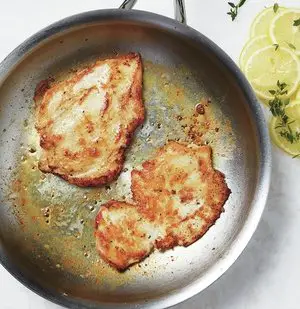 So, working with one piece at a time, place the chicken between two pieces of plastic wrap and pound with a mallet, a rolling pin, or the bottom of a skillet to an even ½-inch thickness. The paillards will now only take a few minutes in a skillet or frying pan to cook.
So, working with one piece at a time, place the chicken between two pieces of plastic wrap and pound with a mallet, a rolling pin, or the bottom of a skillet to an even ½-inch thickness. The paillards will now only take a few minutes in a skillet or frying pan to cook. Preparation really is 90% of the job! One of the recipies I love is
Preparation really is 90% of the job! One of the recipies I love is 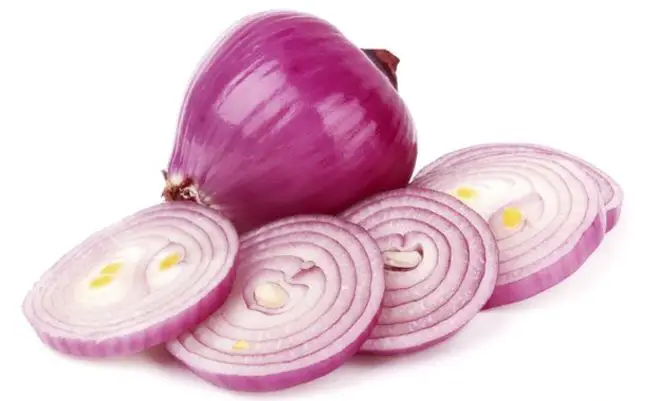 Of all the kitchen nightmares the cook has to live with, the one that generates the most problems for many is the peeling and chopping of onions, and the associated tears and stinging eyes.
Of all the kitchen nightmares the cook has to live with, the one that generates the most problems for many is the peeling and chopping of onions, and the associated tears and stinging eyes.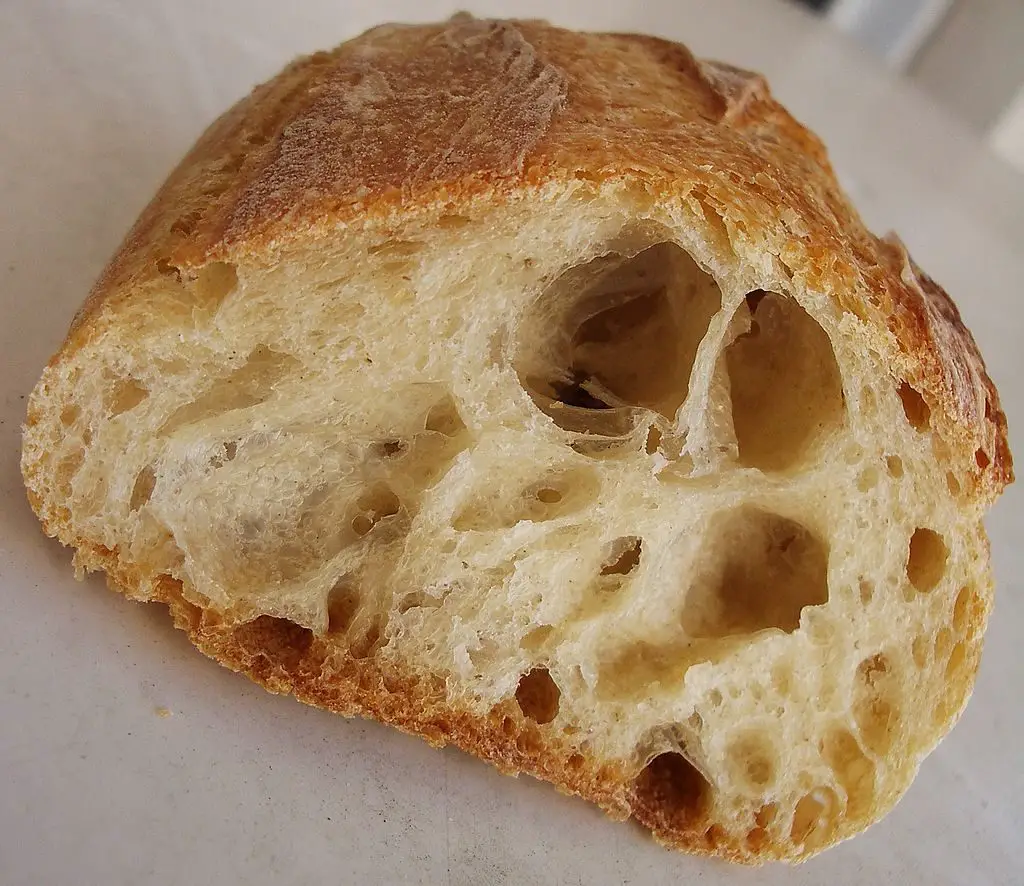 I’ve only tried a few of these tips myself, but one I hadn’t read about was this intriguing tip, which suggests that you to hold a piece of bread in your mouth as you chop. But it has to be pain au levain. Pain levain is a leavened bread, or sour dough bread. That is to say a mixture of water and flour where a culture of yeast and lactic acid bacteria develops. This fermentation, releases carbon dioxide and allows the dough to rise.
I’ve only tried a few of these tips myself, but one I hadn’t read about was this intriguing tip, which suggests that you to hold a piece of bread in your mouth as you chop. But it has to be pain au levain. Pain levain is a leavened bread, or sour dough bread. That is to say a mixture of water and flour where a culture of yeast and lactic acid bacteria develops. This fermentation, releases carbon dioxide and allows the dough to rise.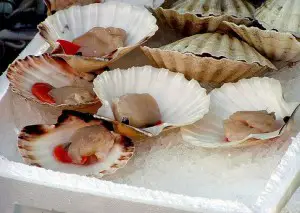 Of course, your fishmonger will open your scallops for you. In fact, they mostly sell just the flesh. But there is seriously nothing better than a FRESH scallop, as we discovered the other day as we went to the market. Most people are simply afraid of what’s inside a scallop and are not sure what to keep and what to throw away, but it’s drop-dead simple, and here’s how you do it…
Of course, your fishmonger will open your scallops for you. In fact, they mostly sell just the flesh. But there is seriously nothing better than a FRESH scallop, as we discovered the other day as we went to the market. Most people are simply afraid of what’s inside a scallop and are not sure what to keep and what to throw away, but it’s drop-dead simple, and here’s how you do it…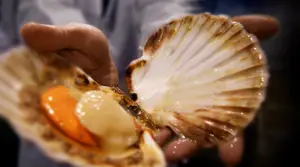 You will now be left with just the edible muscle, though it may be a little gritty with sand, which you can easily rinse off under cold running water. Now you are free to eat them raw from the shell or create any one of a dozen delicious recipes like my favourite,
You will now be left with just the edible muscle, though it may be a little gritty with sand, which you can easily rinse off under cold running water. Now you are free to eat them raw from the shell or create any one of a dozen delicious recipes like my favourite,